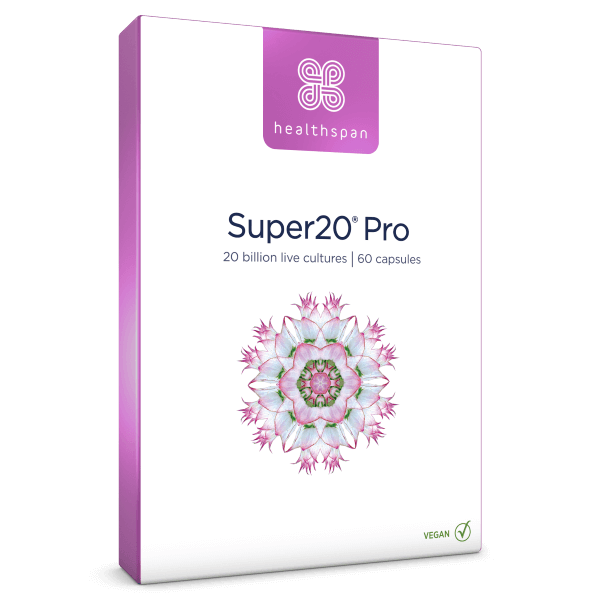Your immune system is responsible for protecting your body against infection and abnormal cells, and a well-functioning immune system is key to maintaining your overall wellbeing. But how can you support this vital system?
The key factor that determines your immune health is the level of white blood cells in your body. White blood cells are like the soldiers of the immune system. Their job is to fight off invaders and protect the other systems. But they can only do this if the numbers are right. If there are too many soldiers, or not enough, their defence is affected. Here, we'll go through what white blood cells are, how they work, and how you can keep them at the optimum level for a healthy immune system.
What are white blood cells?
When you think of blood cells, your mind may well go to red blood cells. These deliver oxygen to the cells around the body, which is important for energy levels and overall function of cells and tissues. White blood cells (or leukocytes), on the other hand, are the cells of the immune system that protect against the foreign pathogens that cause infection.1
These cells are produced by cells in the bone marrow and circulate throughout the body. As such, although they are 'blood' cells, they are not only found in the bloodstream but are also found in other places such as the lymphatic system.2 Some white blood cells also leave the circulation to patrol the tissues, where they are known as scavenger cells or macrophages.
There are many different types of white blood cells. The five main categories are lymphocytes, monocytes, basophils, eosinophils and neutrophils. Amongst lymphocytes, you'll find many of the well-known white blood cells such as B cells, T cells, and natural killer (NK) cells.3 Importantly, different types of blood cells have different actions within the body.
Eosinophils and basophils, for example, play a part in allergic responses, whereas neutrophils focus on bacterial and fungal infections. Lymphocytes are responsible for protecting the body against viruses and tumour cells, and for releasing antibodies. As each cell has its own function, it's important to have healthy levels of each for optimal immunity.
When measured in a blood test, the level of specific white blood cells can indicate the presence of disease or infection. As part of regular immune functioning, it's normal for white blood cell levels to become elevated outside of the normal range from time to time. However, ongoing elevations or deficiencies could indicate more serious concerns.
The importance of regulating white blood cells
Abnormal white blood cell levels can have widespread effects on health, so it's important that they are regulated at the optimal level -not too high, not too low.
If levels drop too low, or if the white blood cells don't function optimally, you are more susceptible to infectious illness. This places you at a higher risk of regularly catching a common cold, for example. Very high or very low white blood cell levels can also occur as a result of more serious health conditions such as leukaemia.4
Elevated levels are also associated with chronic health concerns such as heart disease, kidney failure or thyroid problems.5 The most likely cause of exceedingly high levels of white blood cells is infection or inflammation: a natural and necessary process (especially during illness and injury).6
However, chronic inflammation can be detrimental to your overall wellbeing. It's associated with many chronic diseases including type 2 diabetes, metabolic syndrome and rheumatoid arthritis.7 By maintaining a healthy level of white blood cells, you may be able to reduce the risk of inflammatory conditions.
Supporting healthy white blood cells
There are no known ways to regulate the production of white blood cells with nutrients. However, there are a few steps you can take to promote a healthy immune system.
Eating a healthy, balanced diet
Consuming a diet that is rich in antioxidants is one of the best measures to support immunity. Antioxidants protect the body from the damage of inflammation and oxidative stress. Research suggests that antioxidants can shield leukocytes from oxidative stress, improving their function.8
To consume plenty of antioxidants through your diet, it's best to opt for fruits, vegetables, nuts, seeds, herbs, and spices. More specifically, you should increase your intake of brightly coloured wholefoods -especially orange and yellow foods, and green leafy veg.
It's also important to reduce your intake of foods that can have adverse effects on immunity. This includes junk food and foods with added sugars, as these are full of 'empty calories' that bring no additional nutritional benefits. Research shows that consuming large amounts of simple sugars, including those found in honey and orange juice, suppresses the ability of neutrophils to tackle bacteria, leaving you more prone to infection.9
Nurturing the gut
To maintain a healthy immune system, it's important to consider the health of your gut. Since 70% to 80% of your immune system is found in the walls of the digestive tract, your gut health greatly impacts upon your body's natural defences.10 In fact, research has found that germ-free mice with no gut bacteria have fewer white blood cells to protect them.11
Eating a variety of high-fibre foods, minimising sugar intake and consuming probiotic foods such as sauerkraut and kimchi, which are fermented by beneficial bacteria, are just some of the ways to support your gut health naturally.

Super20 Pro
Our best-selling probiotic
- 20 billion live cultures from 5 well-researched strains
- Contains Lactobacillus acidophilus, Lactobacillus paracasei, Bifidobacterium lactis and Bifidobacterium bifidum
- Supports the protective intestinal microflora in the gut
Simple lifestyle changes
Another way to support immunity and white blood cell levels is through implementing some simple lifestyle changes. Regular exercise, for instance, is particularly beneficial if you have low-grade inflammation. One study12 showed that aerobic exercise reduced the total white blood cell and neutrophil count in women who had elevated levels and were thus at risk of heart disease. What's more, exercise can also prevent the effects of ageing on the immune system.
One study found that cyclists aged 55-79 had the same T cell counts as healthy young adults between 20-36 years old -suggesting that regular exercise could help to balance the levels of white blood cells, boosting the immune system.13
One other factor to consider is your stress levels. Long-term stress can have a negative impact on your immune system, causing white blood cell levels to increase above or decrease below ideal levels. One study looked at acute stress in students and found that it reduced the levels of natural killer cells and monocytes, potentially increasing the risk of falling prey to infectious disease.14
For more information on how to support your natural defences, select Immunity from the Your health menu above.







